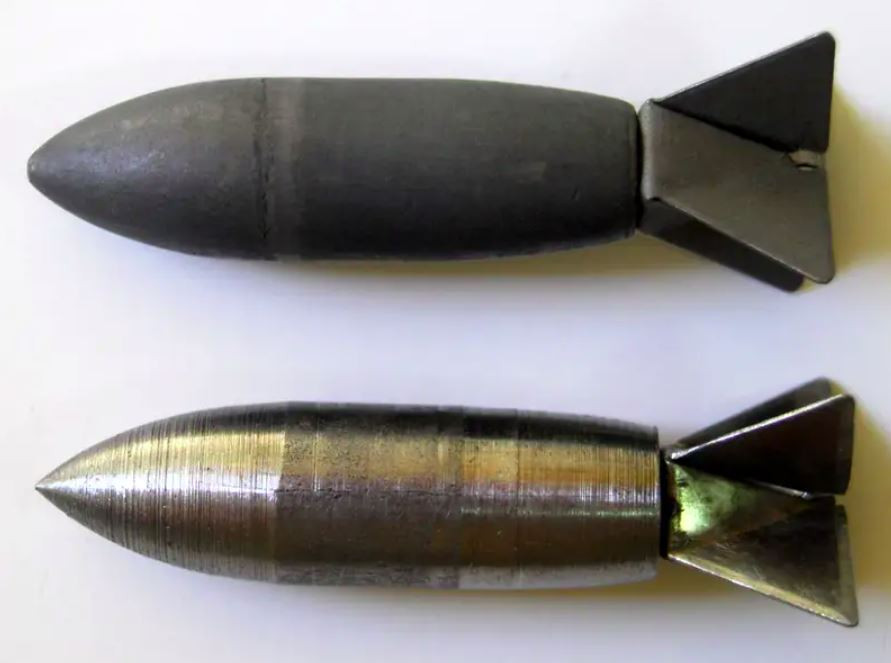The 107-nation Outer Space Treaty, signed in 1967, prohibits the placement or use of nuclear, biological or chemical weapons in Earth orbit. But this deal seems to have forgotten the US Air Force’s simplest weapon ever: a tungsten rod that can hit a city with the explosive power of an intercontinental ballistic missile. This plan is called “Project Thor” and is known as the kinetic bombing system or orbital bombardment.
Before Project Thor
During the Vietnam War, the US used bombs, which it called “Lazy Dog”. These were simple solid steel pieces, less than 2 inches long, fitted with wings. These “bombs” had no explosives and were simply dropped from hundreds of aircraft flying over Vietnam.
Sloth Dog projectiles (also called “kinetic bombardments”) could reach speeds of up to 800 kilometers per hour when falling to the ground and penetrate 23 centimeters of concrete after falling from a short height of 900 meters.
 “Lazy Dog” bullets
“Lazy Dog” bulletsThese weapons had the same basis as firing a bullet at a target, except that, unlike bullets, they gain speed and energy on impact instead of losing speed during movement. With these weapons, a large forest area was literally showered with bullets at high speeds, as if shot with a shotgun.
This is how Project Thor came to be
Thor, which started to be discussed during the Cold War, is based on using a large bullet dropped from orbit, a few thousand kilometers above the Earth, instead of hundreds of small bullets from a few hundred meters. Also known as “rods from God,” the idea uses a bundle of tungsten rods the size of a telephone pole (about 6 meters long, 30 centimeters in diameter) dropped from orbit and reaching speeds up to 10 times the speed of sound.
According to the plan, the rod itself would have the power to penetrate tens of meters into the Earth, potentially destroying fortified bunkers or hidden underground spaces. What’s more, when the rod struck, it would create an explosion the size of a ground penetrating nuclear weapon, while not causing nuclear fallout.
Such a weapon would be able to destroy a target in just 15 minutes of warning time.
But at the time, sending any object into space could cost over $20,000 per kilogram. Due to the enormous weight of the tungsten rods, sending even just one of these rods into space would be enormously expensive. The cost of $230 million per stick was unthinkable during the Cold War, and the Thor project remained a project.
Could things change today?
The Bush administration considered reconsidering the idea of hitting underground nuclear facilities in hostile countries in the years after the September 11 attacks. Interestingly, in 1962, when it was first released, a single Minuteman III ICBM cost $7 million (equivalent to $57 million when adjusted for inflation).
One of the problems with nuclear weapons is that they are not designed to penetrate deep below the surface. In addition, the fallout of a nuclear weapon can devastate potentially friendly areas in the surrounding area. Hypersonic weapons like Project Thor, on the other hand, may seem simple in theory, but with their enormous power, they could be the future of global warfare.